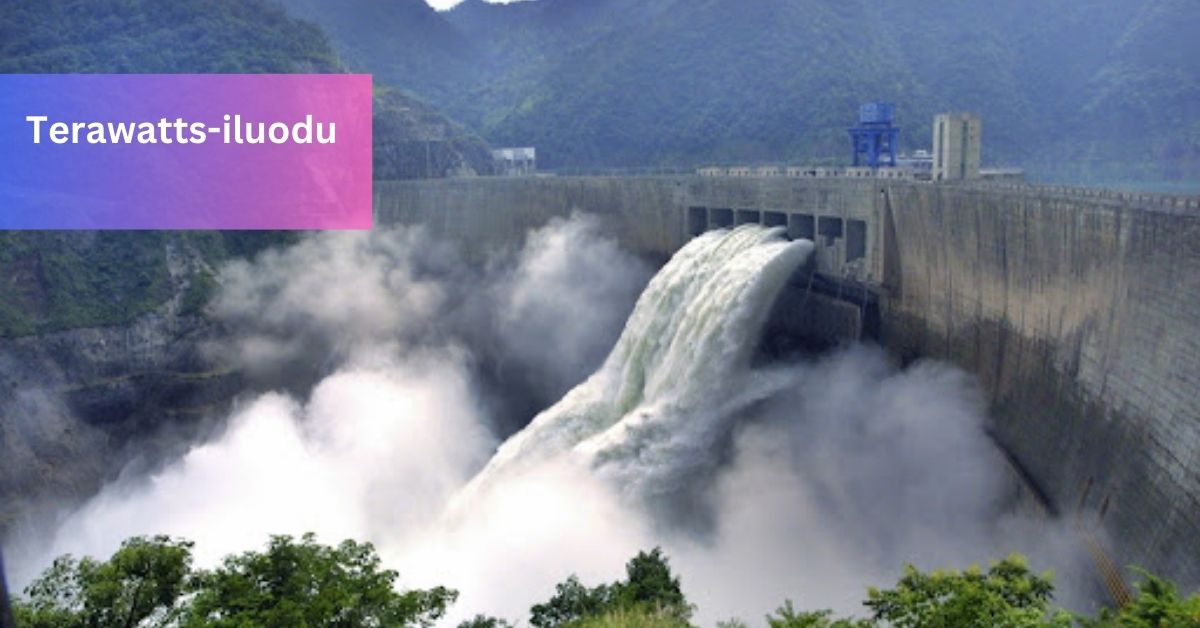Terawatts-iluodu – Harness the Power of Terawatts!
Introduction
Nestled in the stunning landscapes of the Yunnan and Sichuan provinces of China, the Xiluodu Dam is a monumental structure that has significantly impacted the global energy landscape. As the second largest hydroelectric power plant in the world, with an impressive capacity of 13,860 megawatts (MW), the dam stands as a beacon of human ingenuity and ambition.
This article delves into the multifaceted aspects of the Xiluodu Dam, from its construction to its operational capabilities, and explores its environmental and social implications, providing a comprehensive overview of its significance.
Historical Context and Construction:
The Need for Renewable Energy
In the early 1990s, China faced an increasing demand for electricity due to rapid industrialization and urbanization. The government recognized the need for sustainable energy solutions to support its growing economy and reduce dependence on fossil fuels.
The Jinsha River, a tributary of the Yangtze River, was identified as a prime candidate for hydroelectric power generation, leading to the inception of the Xiluodu Dam project.
Planning and Design Phase
The planning for the Xiluodu Dam involved extensive feasibility studies, environmental assessments, and engineering designs. The project’s aim was not only to harness the power of the Jinsha River but also to mitigate the ecological impacts typically associated with large dam constructions.
A team of engineers and environmental experts collaborated to create a design that would maximize energy output while minimizing disruptions to local ecosystems.
Construction Journey
Construction of the Xiluodu Dam officially began in 2006, marking the start of a significant engineering endeavor. The project employed thousands of workers and utilized advanced construction technologies to navigate the complex geographical features of the site.
Workers faced various challenges, including steep slopes and fluctuating water levels, but their resilience and dedication led to the dam’s completion in 2014.
Key Features of the Dam
The Xiluodu Dam stretches 285.5 meters (936 feet) high and 700 meters (2,297 feet) wide, featuring a large reservoir that extends for 1,300 kilometers (807 miles). The dam’s construction involved an enormous volume of concrete and steel, and it was designed to withstand significant seismic activity, ensuring its durability in the face of natural disasters.
Operational Capacity and Technology:
Power Generation Capabilities
With a total installed capacity of 13,860 MW, the Xiluodu Dam is capable of generating approximately 62.4 billion kilowatt-hours (kWh) of electricity annually.
This staggering output is sufficient to power millions of households, significantly contributing to China’s national grid and addressing energy shortages in remote areas.
Advanced Technologies
The Xiluodu Dam employs cutting-edge technology to optimize its operations. Automated monitoring systems track water flow, reservoir levels, and energy production, enabling efficient management of resources
.These systems help maintain a steady electricity supply while adapting to changing environmental conditions, ensuring the dam operates effectively throughout the year.
Economic Contributions
The electricity generated by the Xiluodu Dam supports economic growth in several ways. Industries benefit from a reliable energy source, enabling them to operate efficiently and expand their production capabilities. Furthermore, the dam has created numerous job opportunities, both during construction and in ongoing operations, providing livelihoods for local residents.
Environmental Impacts:
Alteration of Natural Ecosystems
While the Xiluodu Dam plays a crucial role in renewable energy production, it has also raised concerns about its environmental impact. The dam’s construction altered the natural flow of the Jinsha River, affecting aquatic habitats and the local ecosystem.
Fish species, such as the endangered Chinese sturgeon, face challenges in migrating upstream, which can lead to long-term declines in populations.
Mitigation Measures
In response to these environmental concerns, authorities have implemented various mitigation measures. Fish ladders and artificial spawning grounds have been created to support local fish populations and facilitate migration.
Additionally, environmental monitoring programs are in place to assess the health of the ecosystem and guide adaptive management strategies.
Climate Change Considerations
Hydroelectric power generation is often touted as a clean energy solution, but the Xiluodu Dam also faces challenges associated with climate change. Changes in precipitation patterns and extreme weather events can affect water levels in the reservoir, potentially impacting power generation. As such, continuous assessments of climate risks are essential for the dam’s long-term sustainability.
Socio-Economic Implications:
Impact on Local Communities
The construction of the Xiluodu Dam had significant socio-economic implications, particularly for local communities. While the project created jobs and improved energy access,
it also resulted in the displacement of thousands of residents. Families who had lived along the Jinsha River for generations were relocated to make way for the dam and its reservoir.
Resettlement and Compensation
In response to the displacement, the Chinese government established resettlement programs aimed at compensating affected families and providing them with new housing and opportunities.
However, the emotional and cultural impacts of losing ancestral lands can be profound, leading to ongoing challenges for these communities.
Economic Development
Despite the challenges associated with displacement, the Xiluodu Dam has also fostered economic development in the region. With increased access to electricity, local industries have flourished, leading to job creation and improved living standards.
The availability of reliable energy has encouraged investments in manufacturing, agriculture, and other sectors, contributing to the overall growth of the local economy.
Future Prospects:
Innovations in Renewable Energy
As the world grapples with climate change and energy security, the lessons learned from the Xiluodu Dam can inform future renewable energy projects. Innovations in hydroelectric technology, such as enhanced turbine efficiency and advanced water management systems, can help maximize energy output while minimizing environmental impacts.
The Role of Policy and Governance
Effective governance and policy frameworks are essential for ensuring that large-scale infrastructure projects, like the Xiluodu Dam, are developed responsibly.
Transparent decision-making processes, community engagement, and adherence to environmental standards can help balance economic growth with social and ecological considerations.
Conclusion:
The Xiluodu Dam is a remarkable achievement in renewable energy and engineering, providing substantial benefits in power generation and economic development.
However, it also raises critical questions about environmental sustainability and the impacts on local communities. As the world continues to seek innovative solutions to energy challenges, the experiences and lessons from the Xiluodu Dam can guide future endeavors toward a more sustainable and equitable energy future.
FAQS:
1. What is the Xiluodu Dam?
The Xiluodu Dam is a hydroelectric power plant located on the Jinsha River in Yunnan and Sichuan provinces of China. It is the largest dam in China and the second largest in the world, with a capacity of 13,860 MW.
2. When was the Xiluodu Dam constructed?
Construction of the Xiluodu Dam began in 2006 and was completed in 2014.
3. How much electricity does the Xiluodu Dam generate?
The Xiluodu Dam can produce approximately 62.4 billion kilowatt-hours (kWh) of electricity annually, enough to power millions of households.
4. What are the environmental impacts of the Xiluodu Dam?
The dam has altered the natural flow of the Jinsha River, affecting local ecosystems and fish migration patterns. Mitigation efforts, such as fish ladders, have been implemented to support wildlife.
5. How has the dam affected local communities?
The construction of the dam displaced thousands of residents, leading to the establishment of compensation and resettlement programs. While it has created jobs and improved energy access, the emotional and cultural impacts on communities are significant.
6. What technology is used in the Xiluodu Dam?
The dam employs state-of-the-art technology for monitoring water flow and energy production, ensuring efficient operation while managing resources responsibly.
7. How does the Xiluodu Dam contribute to China’s energy needs?
The Xiluodu Dam plays a crucial role in alleviating energy shortages in China, supporting economic growth by providing reliable electricity to industries and homes.
8. Are there any ongoing environmental assessments for the Xiluodu Dam?
Yes, regular environmental assessments are conducted to monitor the health of the ecosystem and ensure that the dam’s operation remains sustainable.
9. What lessons can be learned from the Xiluodu Dam?
The Xiluodu Dam highlights the importance of balancing renewable energy development with environmental sustainability and community rights. Future projects can learn from its successes and challenges.
10. Is the Xiluodu Dam part of a larger energy strategy in China?
Yes, the Xiluodu Dam is part of China’s broader strategy to invest in renewable energy sources, reduce carbon emissions, and meet the growing energy demands of its population.





